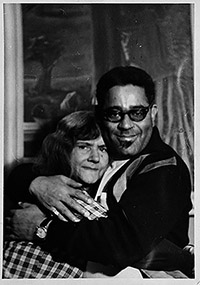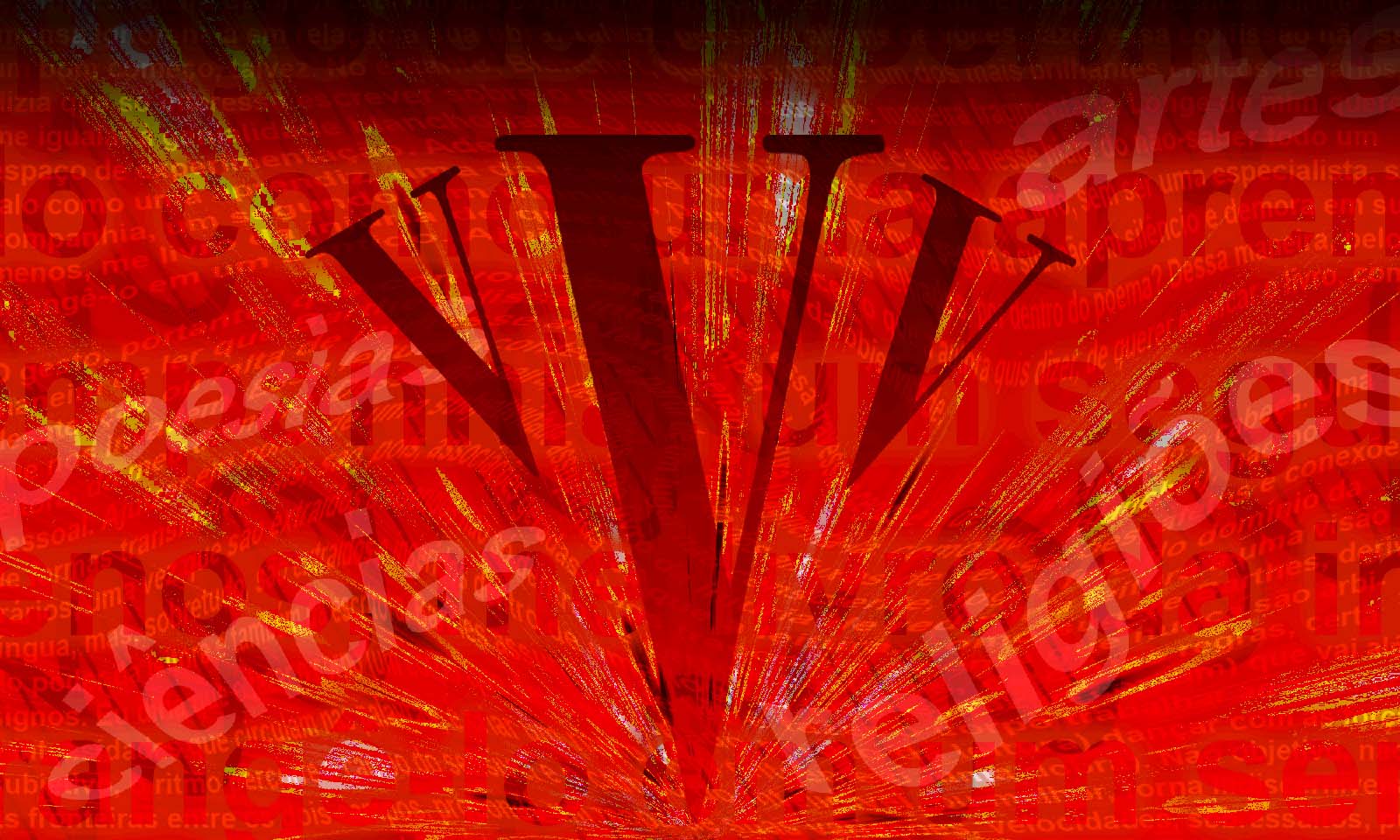ROSEY SELIG-ADDISS

Who is Gertrude Abercrombie? An exhibition and its book — the first show of her work in New York since 1952, organized by Dan Nadel — is here to introduce you. Abercrombie (1909-1977) is a surrealist painter who lived and worked in Chicago in the mid-twentieth century. As the “Gertrude Stein of the Midwest,” Abercrombie reigned over the cultural scene of Chicago’s Hyde Park neighborhood from the 1930s to the 1970s, where she held lively dinner parties and salons that included many of the city’s legendary jazz musicians, writers, and artists. In fact, James Purdy based one of the characters in his novel Malcom (1959) off of Abercrombie herself (which then became the basis of Edward Albee’s play of the same title), Ernst Krenek composed one of his operas while renting the second floor of her home (likely Dark Waters (1950)), and in 1956 pianist Richie Powell composed “Gertrude’s Bounce” in her honor, which he recorded with Max Roach, Sonny Rollins, Clifford Brown, and George Morrow, all of whom were regular guests at her gatherings.
Abercrombie’s home also offered a safe-space for collaborations between artists, musicians, and writers of varying racial and sexual identities at a time when such spaces were as rare as they were important. In a note from her close friend, writer Karl Priebe, the tension of this era and the importance of Abercrombie’s friendship and support in the face of poignant hatred and discrimination is particularly clear. Priebe was openly gay and in an interracial relationship, a situation in the 1940s which necessitated great attention and care to protect himself and his partner, Frank Roy Harriet. In response to an invitation to join Abercrombie at a party, Priebe replies, “You made me so happy by writing. Here is the problem so answer. Frank H. is living with me and is colored and if we can come in the face of that we will. I mean — if Aidan’s place will allow, then definitely we will be there. So find out and write and we’ll appear. I would love to see you so report.”
One of Abercrombie’s closest relationships was with Dizzy Gillespie, with whom she shared a friendship throughout her adult life. Shortly before her death in 1977, Chicago Magazine published an article on Gillespie and Abercrombie, wherein the two were photographed and interviewed together. Gillespie is credited there with calling Abercrombie’s work “bop” art, a story that Abercrombie herself discredits in an interview with Studs Terkel shortly thereafter. As Abercrombie explains, “No. That wasn’t quite right. I told him that I invented the term ‘bop’ for my art because there is a thing called op art and there’s a thing called pop art but I said mine is bop art. I just invented that term in the arts sense but oh no, no, he and Charlie did the bop for music… I think they’re called bop paintings, yes, because they’re a little off, not color but off, kind of off the beam, they’re kind of goofy. I feel that they’re like the bop music.”
Abercrombie’s interest in creating “bop” art highlights an important aspect of the art scene in Chicago at that time — the interest to interpret the contemporary, modernist principles as an invitation to react to the political and cultural climate of the era with independent and unique artistic responses. For Abercrombie, this meant creating paintings that were intellectually strong, based on studied responses to art historical narratives, but nevertheless full of personal resonance, deriving from her own interior consciousness and the exterior scenes of her personal, daily life. As Robert Cozzolino describes in his essay, “The Sorceress in the Center of Everything,” included in Karma’s recent monograph of Abercrombie’s work, Abercrombie lived “the life she wanted, free of society’s prejudices, surrounding herself with people on McCarthy-era America’s margins.”
Accordingly, Karma’s exhibition text and accompanying monograph focus primarily on Abercrombie’s relevance within the social fabric of South Chicago and on the deeply personal nature of her thematic and iconographic choices, which can be seen in the imagery that populates her small-scale paintings. With the exception of two self-portraits, one produced as a watercolor, “Self Portrait Watercolor” (c. 1940) and one as a miniature clay sculpture, “Self Portrait” (c. 1945), the exhibition itself is organized as a fairly straightforward, chronological retrospective of 68 oil paintings that offers a view into the development of Abercrombie’s oeuvre between 1934 and 1971.
By beginning with a piece from 1934, the exhibition opens with a reminder of the fraught historical context in which Abercrombie began her career — in the Midwest, during the Great Depression — when she became involved with the Public Works of Art Project (PWAP) and the Federal Art Project (FAP), both programs within the Works Progress Administration (WPA). The following decades weren’t better. As Cozzolino points out, in 1955 Emmett Till’s home was only two miles from hers and his tragedy was surely felt deeply by Abercrombie and her community. According to Cozzolino, Abercrombie has even explained, “I paint the way I do because I’m just plain scared… I mean, I think it’s a scream that we’re alive today, don’t you?”
As this exhibition demonstrates, when it comes to Abercrombie’s paintings, they are perhaps even more mysterious and compelling than the figure herself. Beyond serving as a reflection of the interiority of a troubled woman in a constant rebellion against her place in an unjust world, Abercrombie’s paintings are charming, magnetizing, and — despite their undoubted scariness — really funny. Relatively small (and sometimes tiny) paintings repeat simple depictions of moons, towers, cats, barren trees, owls, hats, shells, snails, doors, and many, many iterations of herself.
This can be seen clearly with the example of Abercrombie’s “Wall and Giraffe” (1951), which presents a white, brick wall with a small hole, just large enough for a head to peer through from behind. In front of the wall is a giraffe, whose head is just high enough to look over the wall to see the girl on the other side. Do they realize they can see one another? What is the purpose of this barrier separating them, this white wall, and does the sweet optimism with which the giraffe and girl study one another imply the possibility of transcending the boundary to become friends? Without wanting to pull too great a political reading out of such a light-hearted, fantastical painting, the depiction can’t help but recall Robert Storr’s ruminations on Abercrombie’s life in Chicago and the notable absence of any marks of racial struggle found in the photographs of her and her friends. Storr writes, “the insurmountable inequalities, latent tensions, and corrosive mistrust inherent in crossing the boundary from either direction are not apparent on Abercrombie’s face or the faces of her companions. Whether she was simply unaware of their existence and the jazz men simply ignored an ache they almost certainly felt, or whether collectively they had transcended their differences is impossible to know for sure.” Additionally, the redundant nature of Abercrombie’s canvases accentuates her restrained pallet and amplifies the eeriness of her subject matter.
In certain cases, the theme of redundancy is itself latent in Abercrombie’s paintings. “Untitled (Blue Screen, Black Cat, Print of Same)” (c. 1945), presents an image of a room in which there is a cat walking behind a screen and a painting on the wall that depicts the same room with a cat walking out from behind the same screen. Similarly, Abercrombie’s paintings of different colored doors address fundamental questions about repetition as it pertains to daily life, in a simple, clever, and direct way. Abercrombie’s use of repetition, while offering a calming, still quality to the exhibition, also addresses a stoic quality that she upheld within her own life: each day is largely the same, but the future holds the potential for difference and change if one can imagine it.
Finally, Abercrombie’s paintings offer a foil for understanding just how masculine the general conception of twentieth century surrealist art remains. That said, the weight of any systematic attempt to re-appropriate historical legacies fraught with injustice and discontent is notably missing from Abercrombie’s delicate, otherworldly canvases. As with “Wall with Giraffe” — Abercrombie’s work straddles the tension between that which is simple, magical, and free, and that which is turbulent, dark, and unavoidable — the beauty of a moment of friendship and the reality of a wall in between. What is perhaps most astounding about Abercrombie, and lends such depth to her simple canvases, is the tension that she herself embodied: entrenched in the depths of Chicago’s dark, turbulent, discriminatory, social and political reality, Abercrombie created the possibility for a daily life that promoted generosity, freedom, and collaboration. As Abercrombie explained, “Surrealism is meant for me because I am a pretty realistic person but don’t like all I see. So I dream that it is changed. Then I change it to the way I want it.”
This ability to re-construct the world according to her own vision enabled Abercrombie to re-frame her reality within the walls of her Victorian home in Hyde Park, where she could design and produce opportunities for others to share in her vision. Abercrombie’s paintings, each one carefully contained within a beautiful and unusual frame, serve as a reminder of the importance in re-imagining the world to be the place you want it to be by demonstrating the forceful power in deciding to recreate your world according to the image you imagine. Abercrombie imagined herself as a person, a friend, and a collaborator beyond the violence and discrimination of the era’s societal norms, as a surrealist painter “sui generis,” and ultimately as an example of a strong, unique-minded, creative individual who knew how to paint, really well. It is about time that we remember her.
revista triplov . série gótica . outono 2019
parceria tripLOVAGUlha
EDIÇÃO COMEMORATIVA | CENTENÁRIO DO SURREALISMO 1919-2019
http://arcagulharevistadecultura.blogspot.com/
